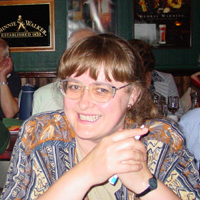Tautvaisiene Grazina - Gaia
Gaia contributors
Gaia was proposed in 1993 and since then, many people have been involved in the Gaia mission, whether at ESA, at industry side or at one of the institutes involved in the Gaia data processing. The Gaia Data Processing and Analysis Consortium (DPAC) is a collaboration which consists of around 450 scientists and engineers.
The list of Gaia contributors presented here should not be considered a complete representation of the entire consortium and should not be considered as a list of currenly active people on the Gaia mission. A more complete list of Gaia contributors that were involved in the creation of the Gaia catalogues can be obtained from the author lists of the Gaia Collaboration overview papers (for Gaia Data Release 1 see here, for Gaia Data Release 2 see here, for Gaia Early Data Release 3 see here, for the full Gaia Data Release 3 see here, for Gaia Focused Product Release see here). A history of contributions to the Gaia mission can be found from the acknowledgements given with each data release.
Gaia DPAC members who wish to be featured on these pages can contact the Gaia Helpdesk. Anyone who wishes to be removed from this website can contact the Gaia Helpdesk.
 |
Grazina Tautvaisiene Vilnius University, |
|
The scientific interest in Gaia is very high in Vilnius, Lithuania, where several scientists at different institutes contribute particularly to the photometric working group activities. In July 2001, the group hosted a workshop devoted to Gaia, entitled "Census of the Galaxy: Challenges for Photometry and Spectrometry with Gaia". Grazina Tautvaisiene has been active in the studies of spectral sensitivities to the alpha-element abundances, with the aim of detecting these variations photometrically. Together with Bengt Edvardsson (Sweden), she has computed model atmospheres with altered abundances of alpha-elements and compared the efficiencies of the different photometric systems proposed for Gaia in the detection of abundance changes in the alpha elements. Presently she is working on studies of spectral sensitivities to CNO abundances, with the aim of also detecting these variations photometrically. Grazina left Gaia in 2006. [Published: 01/12/2003 | Updated: 07/10/2008] |
|
- Removed a total of (2) style text-align:center;
- Removed a total of (4) style text-align:justify;
- Removed a total of (1) border attribute.
- Removed a total of (1) cellpadding attribute.
- Removed a total of (1) cellspacing attribute.
Gaia people archive
- Removed a total of (1) style overflow:auto;
- Removed a total of (2) border attribute.
- Removed a total of (2) cellpadding attribute.
- Removed a total of (2) cellspacing attribute.








































 Sign in
Sign in
 Science & Technology
Science & Technology

